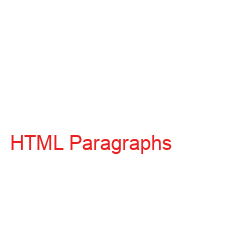HTML Paragraphs: Basic Examples
In HTML, a paragraph is represented using the `
` tag. Paragraphs are used to organize and format text on a web page. In this blog post, we will cover the basics of using paragraphs in HTML, including examples and best practices.
Using the `
` tag is simple. Simply wrap your text between an opening `
` tag and a closing `
` tag, like this:
“`
This is a paragraph of text.
“`
You can include as much text as you want between the tags. Paragraphs can also contain other HTML elements, such as links or images. For example:
“`
This is a paragraph of text that includes a link.
This is a paragraph of text that includes an  image
image
“`
It’s considered best practice to include a `
` tag at the end of each paragraph, before the closing `
` tag. This creates a line break and improves the readability of your code.
“`
This is a paragraph of text.
This is a new paragraph of text.
“`
You can also use CSS to style your paragraphs. For example, you can change the font, color, and size of the text.
“`
p {
font-family: Arial, sans-serif;
color: #333;
font-size: 16px;
}
“`
In conclusion, the `
` tag is a fundamental building block of HTML. Use it to format your text into organized and readable paragraphs. With the addition of `
` tag and CSS styling, you can create attractive and user-friendly web pages.
Here’s an example of a complete HTML file that includes paragraphs:
“`
This is a paragraph of text.
This is a new paragraph of text.
This is a paragraph of text that includes a link.
This is a paragraph of text that includes an  image
image
“`
Remember, practice makes perfect. Don’t be afraid to experiment and play around with HTML to get a feel for it. Happy coding!











